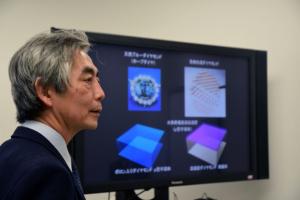Newly developed diamond transistor expected to reduce energy consumption in automobiles

Copyright : Waseda University
A research group led by Professor Hiroshi Kawarada (Faculty of Science and Engineering) has developed a highly efficient transistor used to reduce energy consumption in electric automobiles and trains.
The transistor is activated through regulation of electron holes on the surface of diamonds, can sustain 1600 volts per micrometer, and is resistant to temperatures of up to 400℃.
This diamond transistor considerably out performs standard silicon transistors and can compete with silicon carbide and gallium nitride power semiconductors which have received significant attention in recent years.
The transistor is expected to reduce power consumption for engines in automobiles, trains, and robots.
Research results were presented at the IEEE International Electron Device Meeting (IEDM) held in San Francisco from December 15th to 17th.
Associated links
Waseda University article
Media Contact
More Information:
http://www.researchsea.comAll latest news from the category: Automotive Engineering
Automotive Engineering highlights issues related to automobile manufacturing – including vehicle parts and accessories – and the environmental impact and safety of automotive products, production facilities and manufacturing processes.
innovations-report offers stimulating reports and articles on a variety of topics ranging from automobile fuel cells, hybrid technologies, energy saving vehicles and carbon particle filters to engine and brake technologies, driving safety and assistance systems.
Newest articles

Superradiant atoms could push the boundaries of how precisely time can be measured
Superradiant atoms can help us measure time more precisely than ever. In a new study, researchers from the University of Copenhagen present a new method for measuring the time interval,…

Ion thermoelectric conversion devices for near room temperature
The electrode sheet of the thermoelectric device consists of ionic hydrogel, which is sandwiched between the electrodes to form, and the Prussian blue on the electrode undergoes a redox reaction…

Zap Energy achieves 37-million-degree temperatures in a compact device
New publication reports record electron temperatures for a small-scale, sheared-flow-stabilized Z-pinch fusion device. In the nine decades since humans first produced fusion reactions, only a few fusion technologies have demonstrated…





















